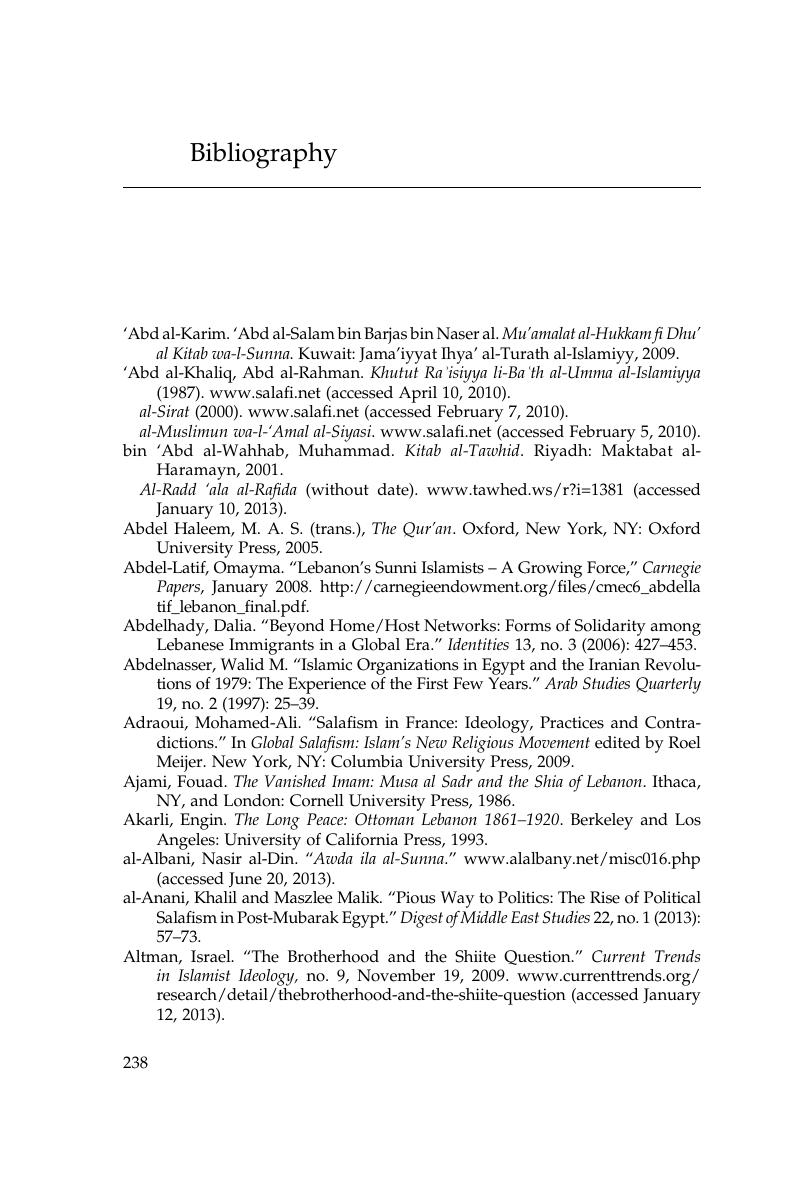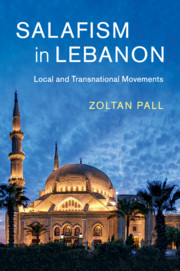Book contents
- Salafism in Lebanon
- Cambridge Middle East Studies
- Salafism in Lebanon
- Copyright page
- Contents
- Acknowledgments
- Introduction
- 1 The Transformation of Salafism in the Gulf
- 2 Salafi Expansion in the 1990s
- 3 The Fragmentation of Salafism in Northern Lebanon
- 4 The Authority of Salafi Shaykhs
- 5 The Structure of Lebanese Salafi Networks at the Local Level
- 6 Transnational Networks of Lebanese Salafis
- 7 Recruitment
- Conclusion
- Bibliography
- Index
- Series page
- References
Bibliography
Published online by Cambridge University Press: 20 March 2018
- Salafism in Lebanon
- Cambridge Middle East Studies
- Salafism in Lebanon
- Copyright page
- Contents
- Acknowledgments
- Introduction
- 1 The Transformation of Salafism in the Gulf
- 2 Salafi Expansion in the 1990s
- 3 The Fragmentation of Salafism in Northern Lebanon
- 4 The Authority of Salafi Shaykhs
- 5 The Structure of Lebanese Salafi Networks at the Local Level
- 6 Transnational Networks of Lebanese Salafis
- 7 Recruitment
- Conclusion
- Bibliography
- Index
- Series page
- References
Summary

- Type
- Chapter
- Information
- Salafism in LebanonLocal and Transnational Movements, pp. 238 - 250Publisher: Cambridge University PressPrint publication year: 2018



